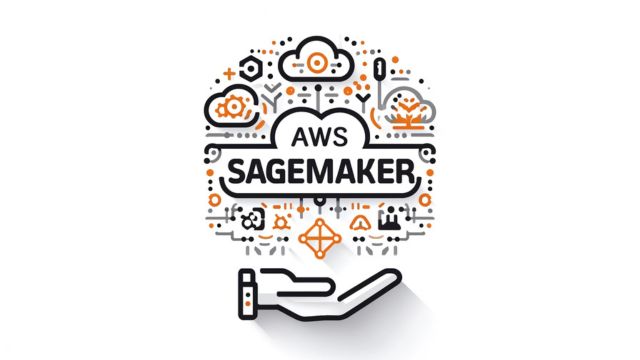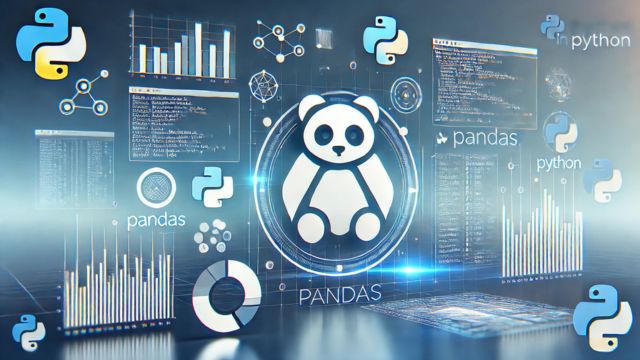Artificial Intelligence (AI) and Machine learning (ML) are transubstantiating industries by automating tasks, perfecting decision-making, and unleashing new business openings. Still, training and deploying AI models at scale can be complex and resource-intensive. AWS SageMaker is a completely managed ML service that simplifies the entire machine learning lifecycle, from data preparation to model training, tuning, deployment, and monitoring.

Table of Contents
What is AWS SageMaker?
AWS SageMaker is a cloud-powered machine learning service that offers end-to-end tools to make, train, and deploy ML models at scale. Launched by Amazon Web Services (AWS), SageMaker eliminates the need to manage underpinning structure, allowing users to concentrate on model development and deployment. It supports popular ML frameworks similar as TensorFlow, PyTorch, and Scikit-learn, making it accessible to data scientists and ML masterminds of all skill grade.
Can also read: Google Vertex AI: Build & Deploy AI at Scale
Key Features of AWS SageMaker
- Fully Managed ML Workflow: Automating the ML lifecycle from data preprocessing to model deployment.
- SageMaker Studio: An integrated development environment (IDE) for the ML systems.
- AutoML with SageMaker Autopilot: Used to automate the model selection, training, and tuning.
- Built-in Algorithms & Custom Models: Supports both pre-built and custom-made ML models.
- Hyperparameter Tuning: Automatically integrates model parameters.
- MLOps & Model Monitoring: Ensures effective model deployment and performance tracking.
- Scalable Infrastructure: Dynamically scales compute coffers.
- Edge AI Deployment: Deploying the models to edge devices using SageMaker Edge.
The Evolution of AWS SageMaker
- 2017 – 2020: The Foundation Years
- Launch of AWS SageMaker as a cloud-powered ML service.
- Introduced the built-in algorithms and model training capabilities.
- Earlier support for TensorFlow and PyTorch.
- 2021 – 2024: Expanding AI Capabilities
- Released of SageMaker Studio for collaborative ML development.
- Improved AutoML with SageMaker Autopilot.
- Introduced the MLOps features for CI/CD automation.
- Growth of adoption across industries.
- 2025: Cutting-Edge AI Deployment
- AI-based AutoML for briskly, more accurate model development.
- -Flawless multi-cloud AI model deployment.
- Federated learning enhancement for secure, distributed AI.
- AI explore ability tools for transparent decision-making.
What’s New in AWS SageMaker 2025?
- AI-Driven Feature Engineering: Automates point extraction and metamorphosis.
- Quantum ML Integration: Supports quantum powered AI model training.
- Edge AI Optimization: Improves real-world AI conclusion on IoT devices.
- Enhanced Model Governance: Using for ensured the compliance and ethical AI practices.
- Federated Learning Support: Enabling of AI training across decentralized data sources.

Applications of AWS SageMaker in 2025
Healthcare & Biotech
- AI-integrated diagnostics and medical imaging analysis.
- Genomic data processing and medicine discovery.
Financial Services
- AI-powered fraud discovery and threat modeling.
- Using for algorithmic trading and investment analysis.
Retail & E-Commerce
- AI-driven recommendation machines.
- Client sentiment analysis for substantiated marketing.
Autonomous Systems & Robotics
- Machine learning for autopilot vehicles.
- -Smart robotization in logistics and manufacturing.
Cybersecurity
- AI-powered trouble discovery and response.
- Prophetic security analytics for enterprise protection.
Comparing AWS SageMaker vs. Other AI Platforms
| Feature | AWS SageMaker | Google Vertex AI | Microsoft Azure ML |
|---|---|---|---|
| AutoML Support | Yes | Yes | Yes |
| MLOps & Monitoring | Yes | Yes | Yes |
| Pre-Built AI Models | Yes | Yes | Limited |
| Scalability | High | High | High |
| Multi-Cloud Deployment | No | Yes | Limited |
| Cost Optimization | Pay-as-you-go | Dynamic | Fixed |
Pros and Cons of AWS SageMaker
Pros:
- Completely managed structure reduces ML complexity.
- Scales stoutly based on workload demand.
- Supporting the AutoML and custom ML model training.
- Comprehensive MLOps features for nonstop integration and deployment.
- Strong optimization with AWS services like S3, Lambda, and Redshift.
Cons:
- AWS reliance limits multi-cloud inflexibility.
- Learning curve for fresh coder.
- Cost considerations for high-scale deployments.

Getting Started with AWS SageMaker 2025
Installation & Setup:
1. Setting up the AWS credentials and configuration of AWS CLI.
2. Installing the AWS SDK:
Bash CODE
pip install boto3 sagemaker3. Introduced the SageMaker Session:
Python CODE
import boto3
import sagemaker
session = sagemaker.Session()
role = sagemaker.get_execution_role()Building an ML Model with SageMaker Autopilot:
Python CODE
from sagemaker.automl.automl import AutoML
automl = AutoML(role=role, target_attribute_name='target', job_mode='Ensemble')
automl.fit(inputs='s3://your-bucket/data.csv')Deploying a Model on SageMaker:
Python CODE
from sagemaker.model import Model
model = Model(model_data='s3://your-bucket/model.tar.gz', role=role)
endpoint = model.deploy(instance_type='ml.m5.large')Advanced AWS SageMaker Concepts
- SageMaker Pipelines: Automate ML workflows for nonstop training.
- Explainable AI (XAI): Enhance the model transparency and interpretability.
- Data Labeling & Augmentation: Improve the training datasets with AI- supported labeling.
- MLOps for CI/CD: Automating the model deployment and versioning.
- Distributed Training: Train high-scale models with resemblant processing.
Future Trends in AI & AWS SageMaker
- AI-Powered Code Generation: Automated ML channels with generative AI.
- Hybrid AI Workloads: Combining cloud-based and on-prem AI processing.
- Real-Time AI for IoT: Deployment of the AI on smart devices with 5G connectivity.
- Self-Supervised Learning: Reducing reliance on labeled datasets.
Conclusion
AWS SageMaker non-stop to be a commanding platform for structure, training, and deploying the AI models at scale. Its completely managed structure, AutoML capabilities, and advanced MLOps features make it an essential tool for enterprises for adopting AI in 2025. Whether uses for healthcare, finance, retail, or cybersecurity, SageMaker’s scalability and effectiveness empower businesses to drive AI development. As AI technology evolving for SageMaker remains at the forefront, enabling flawless AI development and deployment across industries.
AWS SageMaker FAQs
Which of the ML frameworks does AWS SageMaker support?
SageMaker supported by TensorFlow, PyTorch, Scikit-learn, and XGBoost.
Can beginner AI developer use AWS SageMaker?
Yes, SageMaker works on Autopilot offers to AutoML capabilities for druggies with minimum coding experience.
Does SageMaker used to support real-world AI application?
Yes, SageMaker provides real-world conclusion capabilities for AI models.
How does SageMaker using for compare with Google Vertex AI?
SageMaker used to excels in AWS integration and scalability, while Vertex AI provides better multi-cloud inflexibility.
Is AWS SageMaker well suitable for enterprise-scale AI systems?
Yes, SageMaker is developed for large-scale AI deployments with automated expanding and MLOps features.



